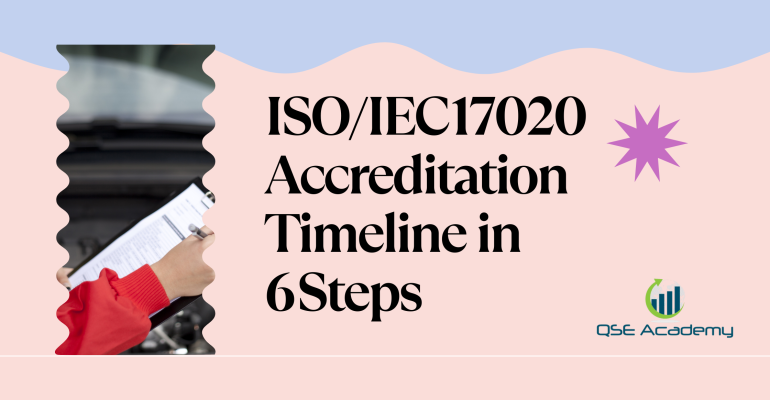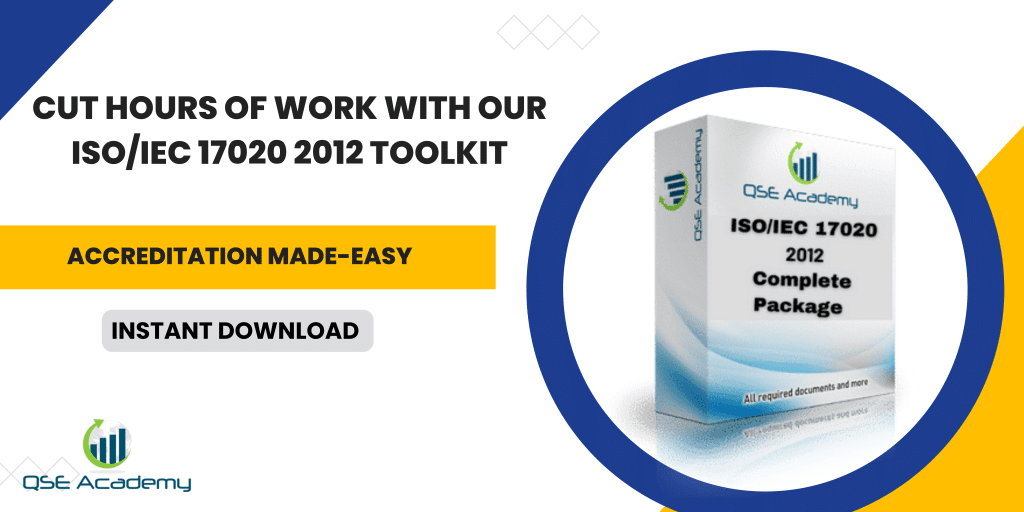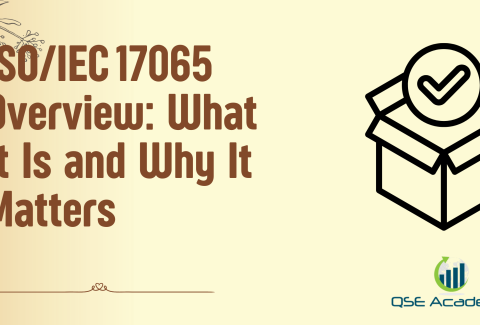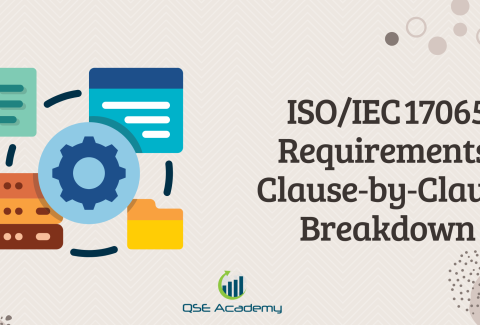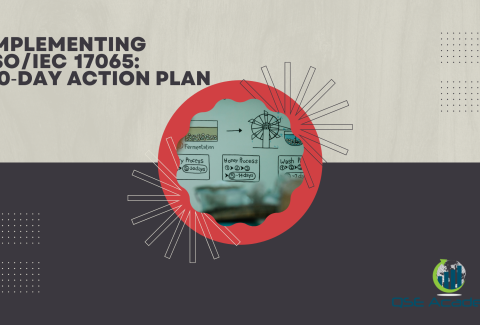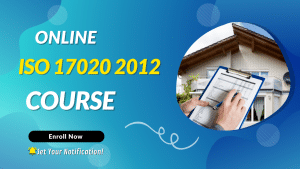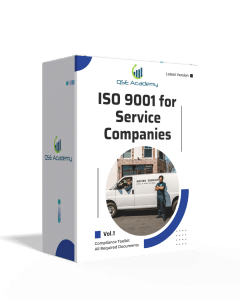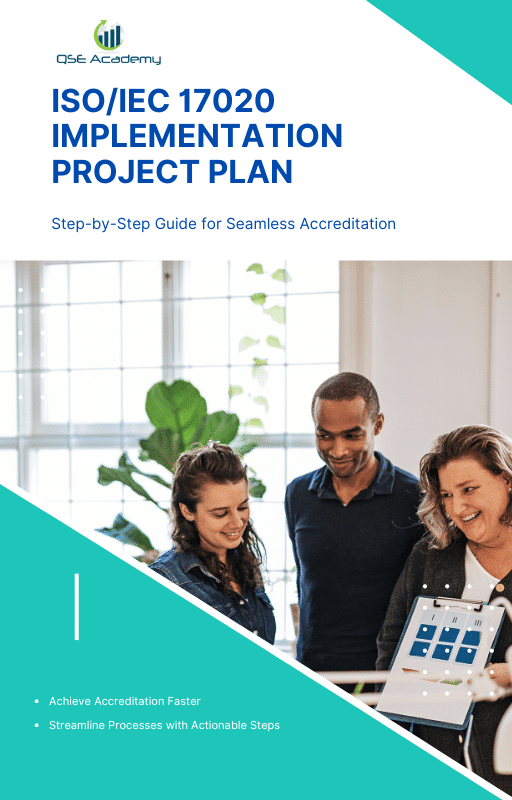ISO/IEC 17020 Accreditation Timeline in 6 Steps
Last Updated on October 22, 2025 by Hafsa J.
Understanding the ISO/IEC 17020 Accreditation Timeline and Process Flow
If you’ve ever tried to plan your ISO/IEC 17020 accreditation, you know it never happens as quickly as you expect. Many inspection bodies assume it’s just a matter of submitting documents and scheduling a visit—but the reality is, the accreditation timeline involves multiple stages, each with its own reviews, corrections, and waiting periods.
In my experience helping inspection bodies across different sectors—construction, testing, calibration, industrial inspection—the same question comes up every time: “How long will ISO/IEC 17020 accreditation take?” And the honest answer is—it depends. The duration varies with your readiness level, documentation quality, staff competence, and how responsive your accreditation body is.
That said, there’s a predictable rhythm to it. Whether you’re just starting out or preparing for reassessment, the ISO/IEC 17020 accreditation timeline typically follows six major steps—from readiness evaluation to certificate issuance. Understanding these phases helps you plan ahead, allocate resources, and avoid unnecessary delays.
In this article, you’ll learn:
-
The six key stages every inspection body goes through in the accreditation journey.
-
The average duration of each stage—so you can set realistic expectations and milestones.
-
Practical tips to reduce waiting time and keep momentum, based on real project experience.
By the end, you’ll know exactly how to map your own ISO/IEC 17020 accreditation process timeline—and manage it like a project, not a guessing game.
Step 1 – ISO/IEC 17020 Readiness Assessment and Gap Analysis
Before you even think about submitting an application, the smartest move is to run a readiness assessment and gap analysis. This first step often determines how smooth—or painful—your entire accreditation journey will be.
Here’s what I’ve seen over and over: inspection bodies that skip this phase end up chasing nonconformities later, paying for extra assessor days, or facing months of delay. A structured readiness review helps you catch those gaps before the accreditation body does.
At its core, the ISO/IEC 17020 gap analysis compares your current management system, inspection process, and records against the requirements of ISO/IEC 17020:2012. You’re essentially asking, “Where do we already comply, and where do we fall short?”
Table 1 – Typical ISO/IEC 17020 Readiness Activities
| Activity | Purpose | Typical Duration | Deliverable |
|---|---|---|---|
| Document review | Check existing manuals, SOPs, and policies against ISO/IEC 17020 clauses | 1–2 weeks | Gap checklist |
| Competence assessment | Verify inspector qualifications, authorizations, and training | 1 week | Competence matrix |
| Impartiality & independence review | Identify risks from ownership or operational conflicts | 3–5 days | Impartiality risk log |
| System maturity evaluation | Assess implementation level of procedures | 1 week | Readiness score report |
A small or medium inspection body usually needs 2 to 4 weeks for a full readiness phase. Larger organizations, or those starting from scratch, might take longer—especially if procedures are still being written.
Pro Tip: Use a structured ISO/IEC 17020 gap-analysis checklist that mirrors the standard’s clause structure (Clauses 4–8). It gives you a measurable picture of where you stand and helps prioritize corrective actions efficiently.
Common Pitfall: Treating the gap analysis like a one-time paperwork task. The real value comes from verifying that your system actually works—not just that it exists on paper. Conduct interviews, review inspection records, and observe how decisions are made.
Once you’ve completed this readiness step and corrected the major gaps, you’ll be in a strong position to move to the next phase—ISO/IEC 17020 Documentation Development and Implementation, where your management system starts taking real operational shape.
Step 2 – ISO/IEC 17020 Documentation Development and Implementation
Once your gap analysis is complete, it’s time to turn insights into action. This phase—documentation development and implementation—is where your inspection body starts building a functional management system that aligns with ISO/IEC 17020:2012 requirements.
Here’s what this really means: you’re creating the documents that define how your organization operates, maintains competence, ensures impartiality, and manages inspection activities. In my experience, this stage takes anywhere from 4 to 8 weeks for most inspection bodies, depending on size and complexity.
Table 2 – Key ISO/IEC 17020 Documentation Requirements
| Document / Record | Purpose | ISO/IEC 17020 Clause Reference | Example Output |
|---|---|---|---|
| Quality Manual | Describes the management system structure and responsibilities | Clause 8.2 | ISO/IEC 17020 Quality Manual |
| Procedures | Define consistent methods for inspections, records, complaints, etc. | Clauses 7–8 | SOPs for inspection process |
| Impartiality Policy | Identifies and controls conflict-of-interest risks | Clause 4.1 | Impartiality & independence policy |
| Competence Records | Demonstrate qualifications and training of inspectors | Clause 6.1 | Competence matrix & authorization files |
| Internal Audit & Management Review Plan | Schedules mandatory internal controls | Clause 8.5 / 8.6 | Annual audit & review schedule |
| Inspection Report Templates | Standardize reporting and traceability | Clause 7.4 | Report and checklist templates |
The implementation part means putting those documents into daily use—not just storing them in a shared folder. Assessors will look for evidence that staff follow procedures, that inspection records are traceable, and that impartiality is actively managed.
Pro Tip: Write procedures in your own operational language. Avoid copy-paste templates that don’t reflect how your team actually works. Assessors can spot generic text instantly.
Common Pitfall: Finalizing documents too early. It’s better to test your procedures during real inspection activities first, then adjust based on feedback. A “living” system always performs better during audits.
Step 3 – ISO/IEC 17020 Internal Audit and Management Review (Readiness Verification Stage)
Once your management system is up and running, it’s time to test how well it performs.
The ISO/IEC 17020 internal audit and management review stage acts as your internal trial run before facing the accreditation body. Think of it as your final rehearsal—you want to find weaknesses yourself, not during the external assessment.
In practice, this step verifies two things:
-
That your processes comply with the ISO/IEC 17020 standard.
-
That your management system is effective, not just documented.
Table 3 – ISO/IEC 17020 Internal Audit and Management Review Timeline
| Activity | Objective | Typical Duration | Deliverables |
|---|---|---|---|
| Internal Audit Planning | Define audit scope, criteria, and schedule | 2–3 days | Internal audit plan |
| Conducting Internal Audits | Evaluate processes, records, and staff interviews | 1 week | Audit reports & NCR log |
| Corrective Actions | Address nonconformities or observations | 1–2 weeks | CAPA records |
| Management Review Meeting | Evaluate overall system performance and readiness | 2–3 days | Management review minutes |
In my experience, this phase usually takes 2 to 3 weeks for most inspection bodies—longer if several corrective actions are needed.
It’s also the stage that separates organizations that “look ready” from those that are ready.
Pro Tip: Have internal auditors who are independent of the activities they’re auditing. Accreditation bodies will check for this during their own assessment.
Common Pitfall: Conducting the internal audit too early—before your procedures have been in use long enough to generate real records. Assessors expect to see evidence of implementation (inspection reports, competence files, impartiality logs).
Step 4 – Submitting the ISO/IEC 17020 Accreditation Application to the Accreditation Body
This is the moment where preparation turns into action—formally engaging with your accreditation body (AB).
Submitting your ISO/IEC 17020 accreditation application marks the official start of the evaluation process and sets the rest of the timeline in motion.
At this stage, your goal is to provide complete, accurate documentation that allows the AB to review your readiness without delay. Most delays in the accreditation process happen here—not because of complexity, but because of missing or outdated documents.
Table 4 – Typical ISO/IEC 17020 Accreditation Application Package
| Document / Requirement | Purpose | Notes |
|---|---|---|
| Completed Application Form | Provides organization details, inspection scope, and contact information | Must match your Quality Manual |
| Scope of Accreditation Matrix | Defines inspection categories, standards used, and technical fields | Use official ILAC/IAF scope format |
| Quality Manual and Key Procedures | Demonstrates system compliance with ISO/IEC 17020 | Submit final, approved versions |
| Impartiality and Risk Assessment Form | Confirms independence and identifies potential conflicts | Often required separately |
| Competence and Authorization Records | Verifies inspector qualifications | Include training evidence and authorization lists |
| Internal Audit & Management Review Reports | Prove readiness and system maturity | Must be completed before application |
| Fee Payment Proof | Triggers official application processing | Applications aren’t logged until paid |
A well-prepared inspection body can complete this phase in 1 to 2 weeks, assuming all documentation is ready. The accreditation body will acknowledge receipt, review your submission for completeness, and assign assessors for document review.
Pro Tip: Double-check your scope of accreditation before submitting. Even a small mismatch between your listed activities and your documented procedures can lead to rework or resubmission delays.
Common Pitfall: Submitting drafts or incomplete records. Accreditation bodies expect finalized documents—if anything changes after submission, you’ll need to resubmit the affected sections, resetting the review clock.
Step 5 – ISO/IEC 17020 On-Site Assessment and Corrective-Action Closure
This is the most decisive part of your ISO/IEC 17020 accreditation timeline—the on-site assessment. Everything you’ve prepared so far leads to this stage, where the accreditation body’s assessors visit your organization to verify that your system works in practice, not just on paper.
During this step, assessors will evaluate your facilities, review inspection records, interview staff, and sometimes witness live inspections. Their goal is to confirm that your inspection body operates impartially, technically competently, and in full alignment with ISO/IEC 17020 requirements.
Table 5 – ISO/IEC 17020 On-Site Assessment and Corrective-Action Timeline
| Stage | Objective | Typical Duration | Expected Output |
|---|---|---|---|
| Opening Meeting | Align scope, team, and audit plan | 0.5 day | Confirmed audit plan |
| Document & Record Review | Verify procedures and records for compliance | 1–2 days | Assessor notes |
| Witness Assessment (if applicable) | Observe inspection activities live | 1 day | Witness report |
| Staff Interviews & Facility Tour | Validate competence and resources | 0.5–1 day | Interview records |
| Closing Meeting & Report Issuance | Summarize findings and classify nonconformities | 0.5 day | Audit report with NCR list |
| Corrective-Action Implementation | Address all nonconformities raised | 2–6 weeks | CAPA evidence |
| Verification by Accreditation Body | Review evidence and close NCRs | 1–2 weeks | Final closure confirmation |
In total, this step typically takes 4 to 8 weeks, depending on the number of findings and how quickly you respond.
The on-site visit itself may last only a few days, but the corrective-action phase often defines the true length of this stage.
Pro Tip:
Respond to every nonconformity with clear, evidence-based corrections. Avoid generic statements like “staff were retrained.” Instead, attach revised procedures, updated competence records, or inspection logs that prove the issue is resolved.
Common Pitfall:
Waiting too long to submit corrective-action evidence. Many accreditation bodies require responses within 15 days of receiving the report—miss that window, and your accreditation decision may be delayed by weeks.
Step 6 – ISO/IEC 17020 Final Accreditation Decision, Certificate Issuance, and Ongoing Surveillance
Once your corrective actions are closed, the hard part is over—but there’s still one final, critical step before you can call yourself an ISO/IEC 17020-accredited inspection body. The accreditation body now performs its internal review and decision process, ensuring impartiality and consistency before granting your certificate.
This stage is often underestimated in the ISO/IEC 17020 accreditation timeline, but it’s essential. Even if your on-site assessment went perfectly, the accreditation body still needs to go through a technical and administrative review before issuing your accreditation decision.
Table 6 – ISO/IEC 17020 Accreditation Decision and Certificate Timeline
| Phase | Purpose | Typical Duration | Output |
|---|---|---|---|
| Technical Committee Review | Independent verification of the assessor’s findings | 1–2 weeks | Technical review report |
| Accreditation Decision | Final approval or rejection by decision committee | 1 week | Formal decision record |
| Certificate Issuance | Preparation and publication of official accreditation certificate | 1 week | ISO/IEC 17020 certificate |
| Publication in Directory | Listing your inspection body on the AB’s website or ILAC MRA database | 2–3 days | Public accreditation record |
| Surveillance Planning | Scheduling next surveillance or reassessment audit | Ongoing | Audit calendar |
Typical duration:
Most inspection bodies receive their official decision and certificate within 2–4 weeks after all nonconformities have been closed. Larger or high-risk scopes may take slightly longer if additional reviews are required.
Pro Tip:
Ask your accreditation body for a tentative decision date once you submit your corrective actions. This helps you coordinate marketing announcements, website updates, and client communications.
Common Pitfall:
Assuming that accreditation ends once the certificate is issued. In reality, ISO/IEC 17020 accreditation is a continuous cycle. You’ll undergo annual surveillance audits to ensure sustained compliance, and a full reassessment every five years.
ISO/IEC 17020 Accreditation Timeline Summary – Complete Duration Overview
Now that you’ve seen each stage of the accreditation journey, let’s put it all together.
The ISO/IEC 17020 accreditation process follows a predictable flow—provided you stay proactive, close findings quickly, and communicate clearly with your accreditation body.
Here’s a practical summary of how long each stage typically takes based on real-world experience with inspection bodies of different sizes.
Table 7 – ISO/IEC 17020 Accreditation Timeline Summary
| Phase / Step | Key Activities | Typical Duration | Cumulative Timeline |
|---|---|---|---|
| Step 1 – Readiness Assessment & Gap Analysis | Document review, competence checks, impartiality assessment | 2 – 4 weeks | Week 4 |
| Step 2 – Documentation Development & Implementation | Create quality manual, SOPs, competence matrix, internal records | 4 – 8 weeks | Week 12 |
| Step 3 – Internal Audit & Management Review | Conduct full internal audit, close findings, hold management review | 2 – 3 weeks | Week 15 |
| Step 4 – Accreditation Application Submission | Prepare and submit application, scope matrix, payment | 1 – 2 weeks | Week 17 |
| Step 5 – On-Site Assessment & Corrective-Action Closure | AB document review, audit visit, nonconformity correction | 4 – 8 weeks | Week 25 |
| Step 6 – Final Decision & Certificate Issuance | Technical review, accreditation decision, certificate release | 2 – 4 weeks | Week 29 |
Total Estimated Duration:
For a well-prepared inspection body, the ISO/IEC 17020 accreditation process typically takes 6–7 months from the initial gap analysis to certificate issuance.
Smaller scopes with excellent readiness can complete it in as little as 4–5 months, while complex, multi-site organizations may need up to 9 months.
Pro Tip:
Keep a visual project tracker that aligns your internal deadlines with these milestones. Accreditation bodies appreciate organized applicants—it often shortens review cycles.
Common Pitfall:
Letting too much time pass between stages. Momentum matters: delays between readiness, internal audit, and application submission can stretch the process by months unnecessarily.
FAQs – ISO/IEC 17020 Accreditation Duration and Process Milestones
Q1: How long does ISO/IEC 17020 accreditation really take from start to finish?
On average, expect 6 to 7 months for a well-prepared inspection body. This includes all stages—gap analysis, documentation, internal audit, assessment, and final decision. Smaller, single-scope organizations can finish in 4–5 months, while multi-site or technically complex bodies might take up to 9 months.
Q2: Can I speed up the ISO/IEC 17020 accreditation process?
Yes, but only through preparation. Completing documentation and internal audits before applying, responding quickly to nonconformities, and maintaining clear communication with your accreditation body can reduce the timeline by several weeks. There’s no shortcut around readiness—efficiency replaces speed.
Q3: What causes the biggest delays during accreditation?
Three main culprits:
-
Incomplete or inconsistent documentation during the application phase.
-
Slow corrective-action responses after the on-site audit.
-
Scheduling delays caused by assessor availability—especially for technical scopes.
Q4: How long does the accreditation certificate remain valid?
Typically five years, with annual surveillance audits and a reassessment at the end of the fifth year. Maintaining compliance throughout ensures continuous accreditation without interruption.
Q5: Is it possible to apply for ISO/IEC 17020 accreditation in parallel with other standards like ISO/IEC 17025 or ISO 9001?
It is possible, but it can extend the timeline. Multi-standard audits require larger assessor teams and cross-verification of management systems. If you’re new to accreditation, it’s often best to complete ISO/IEC 17020 first, then expand later.
Master Your ISO/IEC 17020 Accreditation Timeline in 6 Clear Steps
Getting accredited isn’t just about passing an audit—it’s about building an inspection body that operates with proven competence, consistency, and credibility.
By understanding the ISO/IEC 17020 accreditation timeline and following the six steps outlined here, you can plan the process like a project instead of reacting to it stage by stage.
Here’s the key takeaway:
-
Preparation saves months. Conduct your gap analysis and internal audit before applying.
-
Documentation matters. Clear, organized procedures reduce assessor time.
-
Momentum is everything. Avoid long pauses between steps; keep communication constant with your accreditation body.
In my experience, inspection bodies that approach accreditation with structure, transparency, and discipline not only finish faster—they stay compliant longer.
If you’re ready to take the next step, download the ISO/IEC 17020 Accreditation Timeline Planner or explore QSE Academy’s ISO 17020 Documentation Toolkit to manage your journey from preparation to certification with confidence and clarity.
I hold a Master’s degree in Quality Management, and I’ve built my career specializing in the ISO/IEC 17000 series standards, including ISO/IEC 17025, ISO 15189, ISO/IEC 17020, and ISO/IEC 17065. My background includes hands-on experience in accreditation preparation, documentation development, and internal auditing for laboratories and certification bodies. I’ve worked closely with teams in testing, calibration, inspection, and medical laboratories, helping them achieve and maintain compliance with international accreditation requirements. I’ve also received professional training in internal audits for ISO/IEC 17025 and ISO 15189, with practical involvement in managing nonconformities, improving quality systems, and aligning operations with standard requirements. At QSE Academy, I contribute technical content that turns complex accreditation standards into practical, step-by-step guidance for labs and assessors around the world. I’m passionate about supporting quality-driven organizations and making the path to accreditation clear, structured, and achievable.

